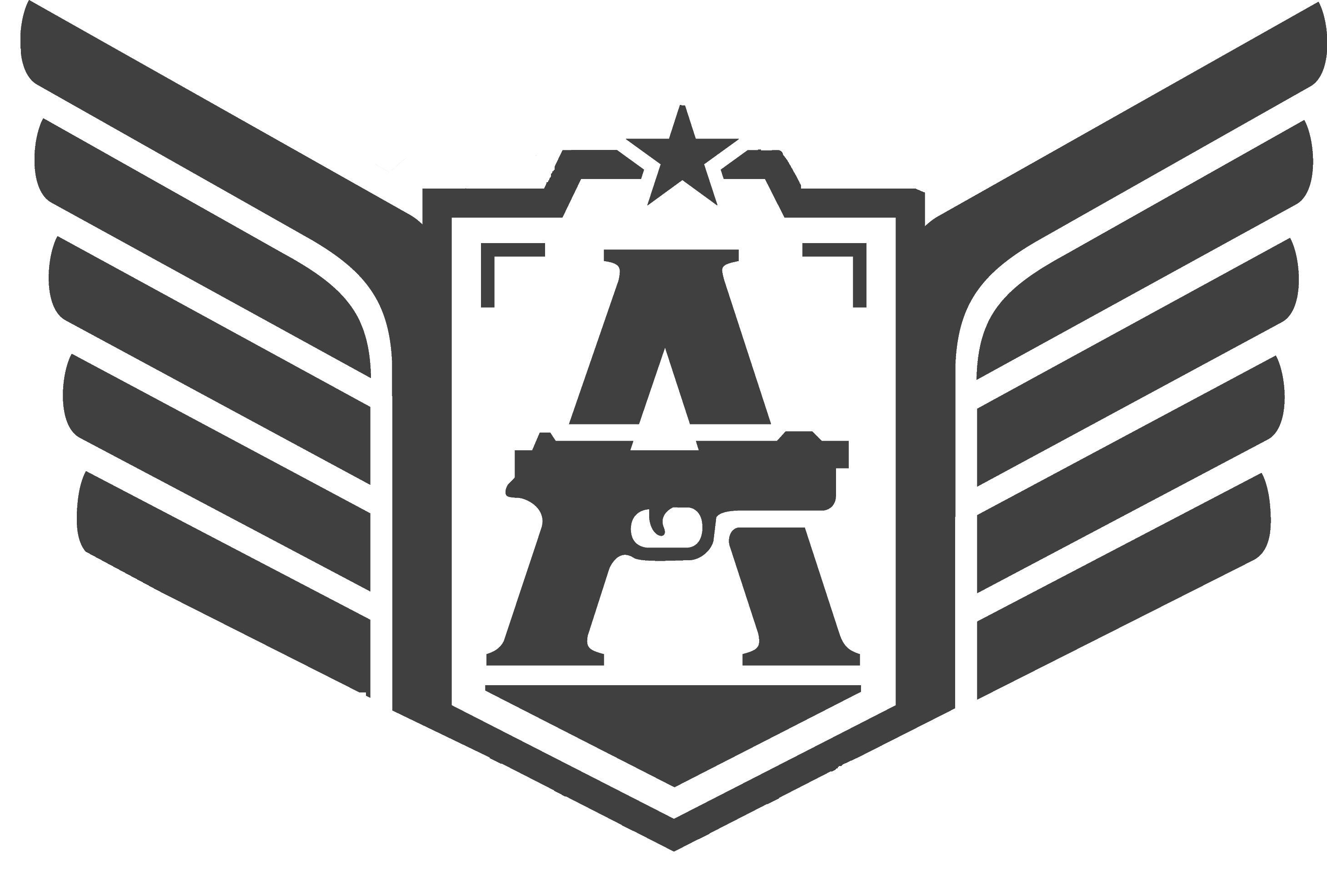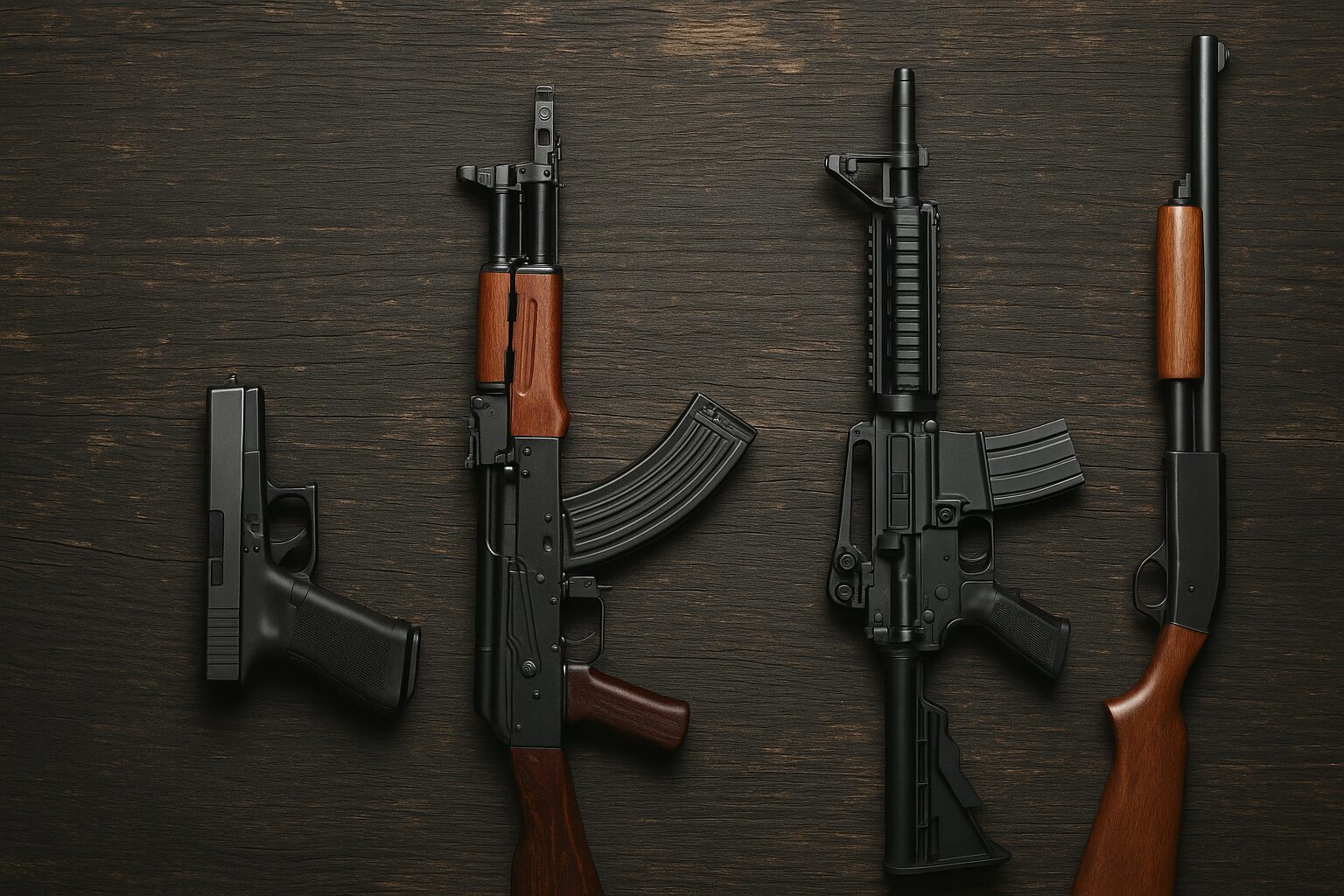Firearms come in many forms, each built upon a specific mechanical principle. Yet few subjects suffer as much confusion as the difference between semi-automatic, automatic, burst fire, and repetition firearms. Journalists blur the lines, politicians build campaigns on those errors, and ordinary people are left believing that every rifle with a rail and a black finish must be a machine gun.
Understanding these systems is not pedantry — it’s fundamental literacy. If someone intends to legislate, train with, or even discuss firearms seriously, they must first understand how the mechanism actually works.
The Fundamentals of Operation
All guns follow the same sequence: a cartridge is fired, gases expand, the bullet travels down the barrel, and something must happen next to prepare for another shot. The difference lies in how that “something” happens — whether manually, or automatically using the energy from the previous round.
A semi-automatic firearm uses part of the energy from the fired cartridge (via recoil or gas pressure) to eject the spent casing, load a fresh round, and reset the firing mechanism. It will fire one shot per trigger pull. That’s it. You pull, it fires; you release and pull again, it fires again. That’s the operating system behind most modern pistols and rifles, from the Glock 17 to the AR-15.

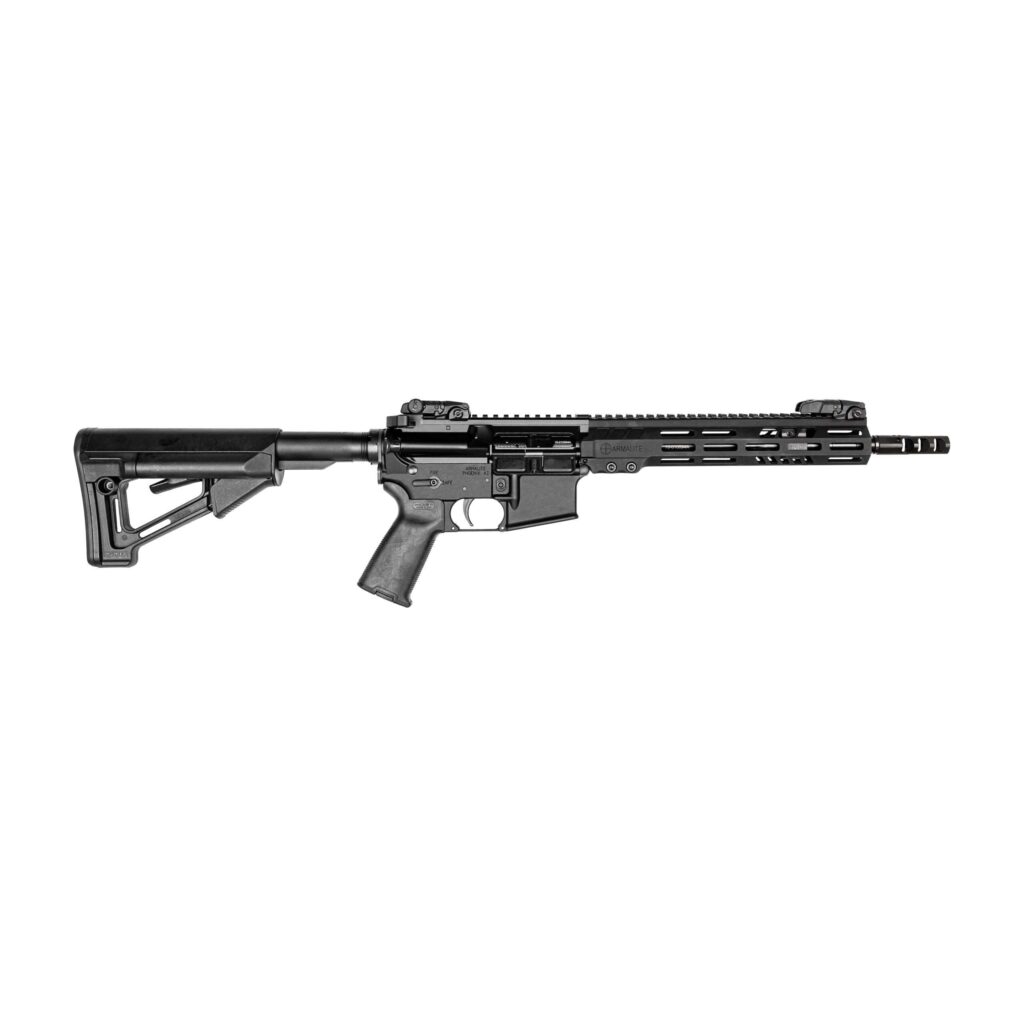

Despite what news anchors repeat daily, a semi-automatic rifle is not an “automatic weapon.” The word automatic in this context refers to the reloading, not to the firing. The gun automatically cycles — but it still waits for your next command before discharging another round.
An automatic firearm, by contrast, keeps firing for as long as the trigger is held down and ammunition remains. Once started, the cycle of firing, extraction, ejection, and reloading continues until the shooter releases the trigger. These are the true machine guns: the M249 SAW, M60, or AK-47 in its military configuration. They can exceed 600 rounds per minute and are designed for suppressive fire rather than precision.
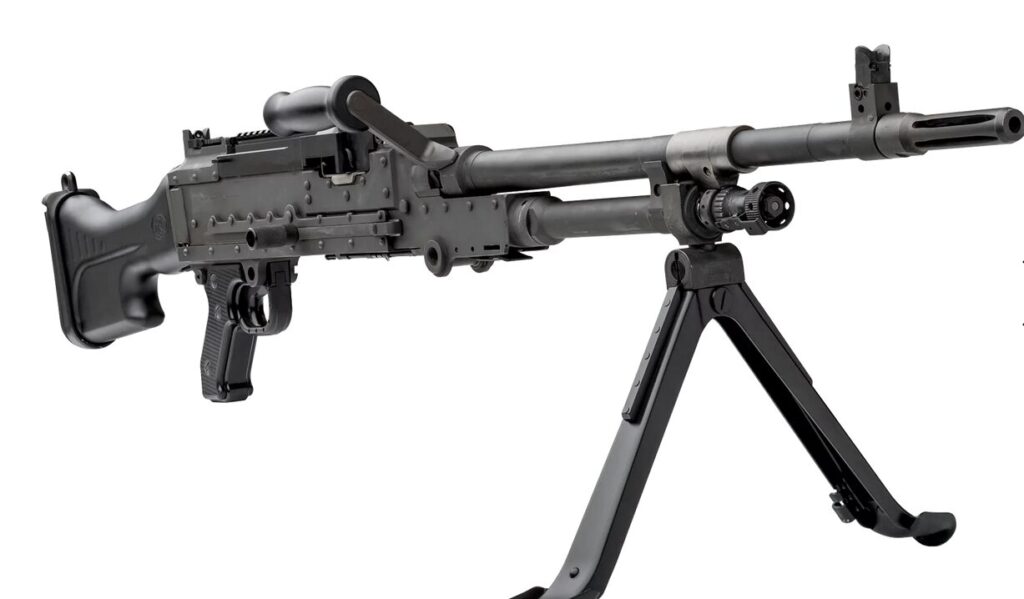
Then there’s the burst-fire mechanism, a sort of halfway point between semi and full-auto. Each trigger pull releases a fixed number of shots — usually two or three — before stopping automatically. The M16A2 rifle adopted this feature in the 1980s after studies found soldiers wasted ammunition under stress when given full-auto capability. Burst fire balances control and speed but introduces mechanical complexity and inconsistent trigger feel.
Finally, repetition firearms (also called manual repeaters) rely on the shooter’s own movement to reload. Bolt-action rifles, lever guns, and pump shotguns all fit this category. The shooter fires, manually cycles the action, and fires again. Simple. Durable. Unfailingly mechanical.

The spectrum is straightforward:
Manual → Semi-automatic → Burst → Fully automatic.
Each step adds automation, complexity, and potential rate of fire — but none of these systems change the physics of a bullet’s flight or its lethality. They only change how quickly a trained shooter can make the next shot.
But Lucas, What the Heck Is an “Assault Weapon”?
Ah, yes — the legendary term that refuses to die. You’ll hear it on television every week: “Assault weapons are destroying our streets!” or “No civilian needs a weapon of war!” The problem is, nobody shouting those slogans seems to know what the words actually mean.
Let’s clear that up once and for all — with the boring, official definitions that journalists never bother to read.
The Real Definition: “Assault Rifle”
The term “assault rifle” was coined in World War II, not in a campaign office. It comes from the German Sturmgewehr 44, literally “storm rifle” or “assault rifle,” a selective-fire weapon designed to combine the range of a rifle with the volume of a submachine gun.
Every reputable military and technical source since then defines assault rifle the same way:
- U.S. Department of Defense (JP 1-02, Dictionary of Military and Associated Terms):
“A short, compact, selective-fire weapon that fires a cartridge intermediate in power between submachine gun and rifle cartridges.” - NATO Small Arms Ammunition Interoperability Glossary (2019):
“A lightweight, magazine-fed, gas-operated, selective-fire weapon firing an intermediate-power cartridge.” - Encyclopaedia Britannica (2024 Edition):
“Military firearm that is chambered for an intermediate cartridge and has both semiautomatic and automatic fire options.” - Jane’s Infantry Weapons:
“Selective-fire rifles capable of fully automatic fire, firing intermediate cartridges with an effective range of about 300–400 m.”
Notice the recurring word? Selective-fire.
That means a switch that lets the user choose between semi-automatic, burst, or full-automatic modes. If a firearm can’t fire automatically, it’s not an assault rifle — no matter how it looks, feels, or is marketed.
The Political Imitation: “Assault Weapon”
Decades later, American politicians borrowed the military term and invented a new one: assault weapon. This label appeared in the 1989 California Roberti-Roos Assault Weapons Control Act, later in the 1994 Federal Assault Weapons Ban, to describe civilian semi-automatic rifles that merely looked like their military counterparts.
The classification had nothing to do with function.
It was about cosmetic features: pistol grips, flash suppressors, adjustable stocks, or even bayonet lugs. Remove one of those features, and the exact same rifle suddenly became “non-assault.” Add it back, and — presto — the same mechanics turned “military-grade.”
It was the legislative equivalent of banning cars with spoilers because they look fast.
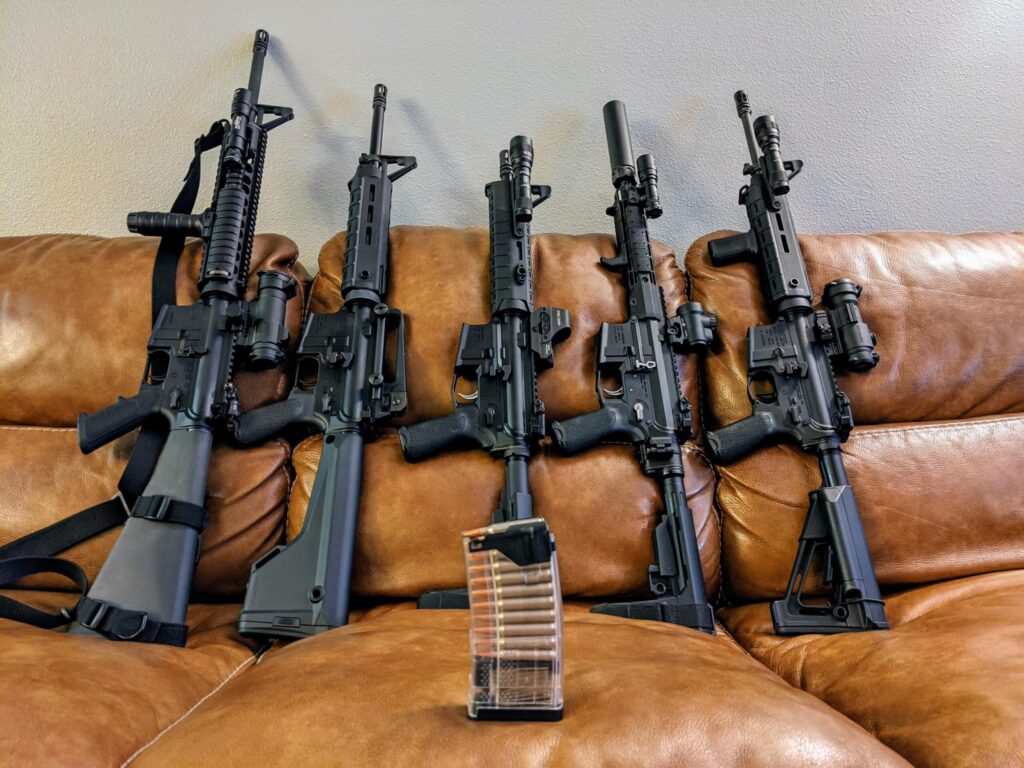
The Concept of “Assault” — And Why It’s Misused
Now, let’s look at the word itself.
“Assault” is a verb — a behavior, not a mechanism. It describes an action, not an object. One can assault someone with a rifle, a rock, a pen, or a bad law. The object doesn’t define the assault; the intent does.
A semi-automatic rifle sitting in a safe doesn’t “assault” anything any more than a parked car commits speeding. What the media calls an “assault weapon” is, in truth, just a semi-automatic firearm that someone misnamed because it looked intimidating.
If we were to follow that logic consistently, we’d also have to ban assault fists, assault chairs, and assault spoons. After all, all have been used in crimes.
The absurdity is obvious. But the rhetoric persists, because fear sells better than mechanical explanations.
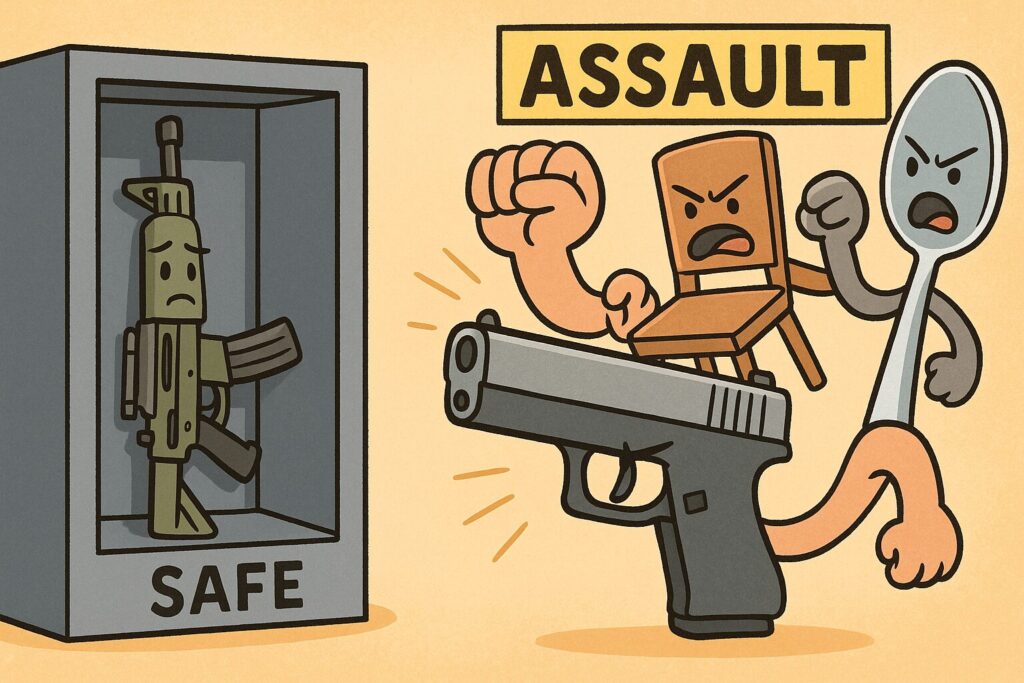
The Silly Conversation That Usually Follows
Politician: “No civilian needs an assault weapon!”
Instructor: “What’s an assault weapon?”
Politician: “You know, those scary black guns!”
Instructor: “The ones that shoot one round per trigger pull?”
Politician: “Yes, but they’re designed for war!”
Instructor: “So are laptops, satellites, and the internet. Welcome to 2025.”
Why This Matters
Mechanically, the distinctions are simple:
- Repetition firearms: Manually reloaded after every shot.
- Semi-automatics: Automatically reloaded, but one shot per trigger pull.
- Burst fire: Limited automatic fire (two or three shots per pull).
- Automatics: Continuous fire while holding the trigger.
Every firearm on Earth fits somewhere along that spectrum. Understanding where your weapon sits isn’t just about semantics — it’s about mastering how it behaves. The rest is political noise dressed in technical language.
Final Thoughts
The truth is elegant and boring: guns are machines. They don’t “assault,” “decide,” or “intend.” They operate according to physics and human input. Whether you run a bolt-action rifle, a semi-automatic pistol, or a full-auto platform, the only real difference lies in how energy cycles the action — and how disciplined the person behind the trigger is.
So next time someone calls a semi-automatic rifle an “assault weapon,” you can smile, take a breath, and ask:
“Is that the Sturmgewehr 44 definition, the Department of Defense one, or just the one you heard on cable news?”
